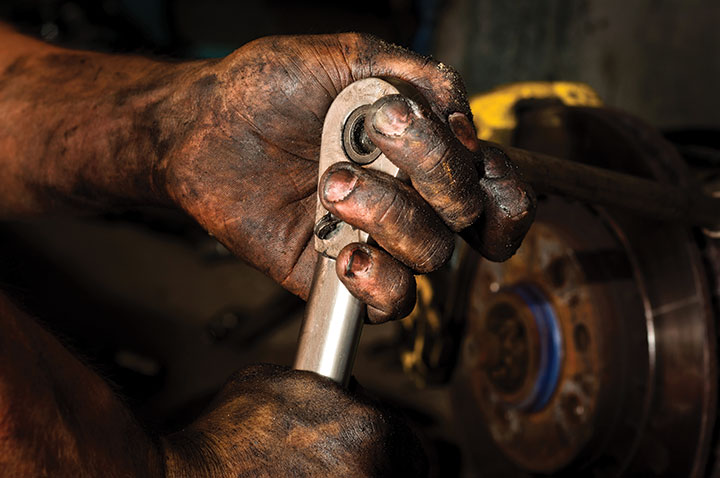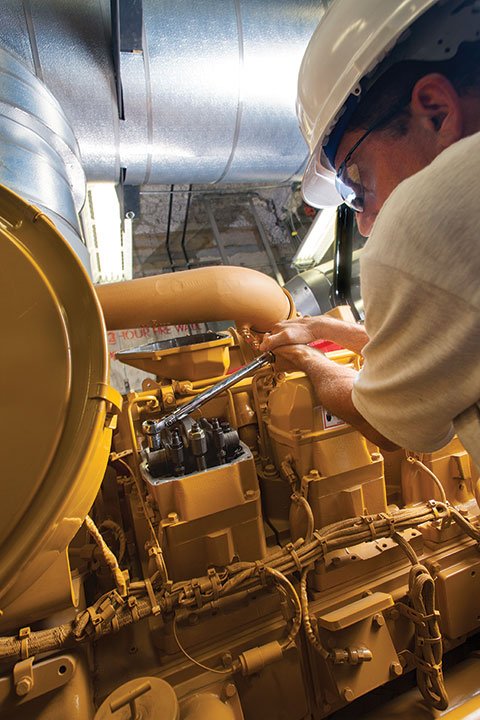
Preventative maintenance (PM) is necessary to keep equipment running in a reliable state. Without it, equipment would fall into disrepair quickly, breakdowns would increase, and the production department would be unhappy.

Photo credit: Getty Images/svedoliver
Finding time to complete all PM tasks is a common issue, regardless if they are for production equipment or facility maintenance. I routinely see the backlog of PM work orders growing and every week staff fall further behind. All PM experts say that PMs come first and are non-negotiable and must be done. In reality, PMs often fall into second place, or third, and are postponed for all kinds of reasons. By the time corrective work orders and scheduled repairs are completed, often only precious time is left to do PM, and most manufacturing facilities have limited time to complete work orders during weekly down days or scheduled outages.
When looking at common excuses for not having a good PM completion rate, usually you see the following:
• PMs in our CMMS are not categorized as priority one;
• There are more hours of PMs in our system than there are worker hours;
• The written instructions for the PMs are not the best, often vague and general, and take more time than they should;
• There aren’t enough scheduled downtime hours per week to achieve a reasonable PM compliance; and
• Runtime PMs are not used effectively to reduce the number of hours needed for downtime PMs.
How do you conquer these issues? During the restoration project, these items were addressed by examining ledgers. The ledger lists all the wear components on the machine and from this information the probability of failure of each component can be determined. The appropriate maintenance strategy is then created.
The strategies include:
• Condition based monitoring – CBM;
• €Intermittent CBM;
• Time-based replacement – TBR;
• Time-based inspection – TBI; and
• Run to failure – RTF.
It’s not reasonable to think we can have equipment monitoring on every component, and it can be expensive to install. However, for critical pieces of equipment, it can be very effective. Monitoring the equipment helps to predict when the component will need to be replaced. Vibration analysis, oil analysis and other types of monitoring on motors, gear boxes, large bearings can be extremely effective; especially when the component is in a hard to reach location or costs are high when they fail.
Whether it’s done in house or by a contract service, vibration/temperature and other CBM can predict failures so components can be scheduled for repair or replacement. A word of caution, if CBM is your strategy, make sure you are 100 per cent confident the monitoring will warn you early enough to take action before a failure.
TBR; Just about every wear component has a life expectancy as long as it is operating in the environment prescribed by the manufacture. Industrial component studies have proven that TBR is often the most cost-effective method of preventive maintenance and has become best practice in many organizations.
Parts like motors, gear boxes, cylinders, and other components have an expected life. Methodically changing these components out on predetermined timelines will ensure reliability. For example; motors and gear boxes may have a 10- to 15-year replacement, depending on their duty cycle, and the condition they operate within. Cylinders might need to be changed every year.

Photo credit: Getty Images/phillipspears
TBI; regular inspections, often called CIL (clean, inspect, and lubricate), keep the machine in good operating condition. This type of maintenance is the most time-consuming. To start with, TBI usually requires the equipment to be stopped so guards and other enclosures can be removed or opened to examine the components.
Every PM has a frequency (weekly, monthly) that describes where we need to clean, lube, and inspect the components. Because every component on the machine is inspected on every PM, we start to fall behind and the number of TBI work orders begins to grow in our work order backlog.
The question is, how can we combat this work order growth? How can quality maintenance be completed on time and not fall behind?
First, inspections need to be smarter. Every item on the inspection sheet needs to have sufficient details to properly inspect the component. Every item on the inspection list needs to be reviewed to determine which components really need to be done on their current frequency.
What are the critical items, and how often do they need to be inspected? Many inspections are general, and every component on the equipment is inspected every PM even if nothing is found wrong time after time. PM instructions need to be custom written for each machine, inspecting the critical items for a given PM frequency.
Second, what inspections can be completed while the machine is actually running? Examine the checklist and determine if some items can be inspected while the machine is operating, thus reducing the number of inspections needing the machine stopped. These two factors alone can reduce the number of labour hours needed to complete TBI.
Finally, there is RTF. Components that have redundant backups or equipment parts, that if allowed to fail will not adversely affect production, can runto-failure. A word of caution, though. Running to failure can create collateral equipment damage; this must be kept in mind when accepting a run-to-failure strategy.
Let’s face it. We are not going to get more maintenance staff to do just PMs, which leaves us with managing the workload with staff we have. Therefore, we must adopt other strategies to maintain the equipment. We must embrace effective maintenance strategies and must think smarter about PM and utilize the equipment and manhours we have available. MRO
